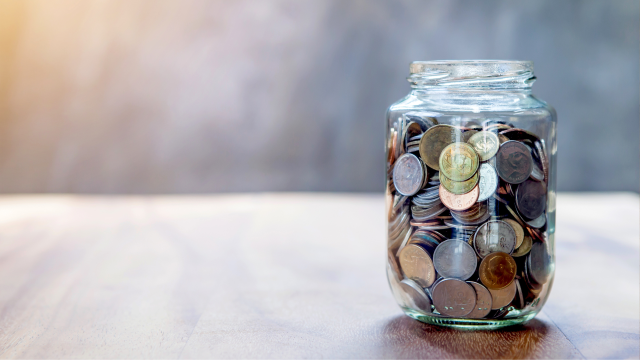If you’re like most people, you probably have a coin collection of some sort in your home. Whether it’s an old jar filled with spare change or a junk drawer that’s carpeted with the remnants of cash purchases past, somewhere in your house lives a pile of money you might never actually use.
Cashing in those coins often seems like more effort than it’s worth. If you go to a Coinstar machine, for example, you might lose 12.5% plus 59 cents per transaction. If you try to cash your coins at a bank, you might get charged a fee or even be refused—and you’ll have to roll them up ahead of time, so you’ll be paying yourself a pretty low wage for some pretty boring work. And if you try spending them, you might also meet resistance (there’s no law requiring businesses to accept specific forms of payment), and you’ll only get a one-to-one valuation.
You might be able to beat that, though. Some of your pennies, nickels, dimes, and quarters might be worth a bit more than their face value—if you know where to sell them. These aren’t rare or collectible coins, but older coins that have a melt value.
Precious metals
U.S. coins are made of metal, as you may have noticed, and metals have a value all their own. Most modern coins are made primarily of low-value metals like zinc or nickel, but older coins were once cast from more valuable stuff like silver and copper. Silver coins—dimes, quarters, and half dollars—dated before 1964 were about 90% silver, and pennies cast before 1983 were about 90% copper. That makes those coins worth considerably more than their face value.
You can’t melt pennies (or nickels), because it’s been illegal to do so since 2007 (the government is trying to keep these coins in circulation, because making them is expensive). But you can actually melt silver coins; this was briefly forbidden in the 1960s, but is currently legal (likely because very few silver coins are actually in circulation, so melting them would have no economic impact). You can see some of the “melt value” of old silver coins here.
What this means is that your jar of spare change may be worth a lot more than you think—if you sell those coins to the right place.
Bulk pennies and junk silver
When people talk about selling coins, they’re usually thinking about rare coins and collectibles, which can be worth astonishing amounts of money. The chances that your jar of change contains a rare, valuable coin are slim, of course, so your best bet is to separate the older coins (you might as well keep an eye out for rare ones while you’re at it, just in case you’ve hit the coin lottery) from the new and sell those in bulk:
- Pennies. The copper value of pre-1983 pennies makes them tempting for folks who are betting the government rescinds the ban on melting them at some point—if the value of an old penny hits something like 10 cents in the future (they’re currently worth a bit less than 3 cents each) and it becomes legal to melt them, having a trunk full of them will pay off big time. As a result, you can find buyers for bulk copper pennies on eBay, Craigslist, or local coin shops and collectors (you can try jumping into the CoinSales subReddit to get some info). Last year a family in Los Angeles found an enormous number of copper pennies (about a million!) and sold them pretty easily.
- Silver. If you have a stash of old quarters, dimes, or half-dollars dated before 1964, you can find a lot of places to sell them. Non-rare silver coins in varying condition are considered “junk silver,” but they’re still worth more than face value. You can sell junk silver coins on eBay or Craigslist as well, but you’ll probably do better at a local pawn shop or online dealers like Kitco or APMEX. It’s a good idea to look up the melt value of your coins just for reference, so you’ll know if the offer is in the right ballpark.
Keep in mind that you’ll have to pay taxes on these sales, as they’re taxed at the capital gains rate. That will take a bite out of the profit, so make sure your math still checks out before you go through all that work.
Your worst-case scenario with a jar full of spare change is that it’s worth exactly its face value. But you might be able to squeeze a little extra out of it if you put some time into it.

Leave a Reply
You must be logged in to post a comment.